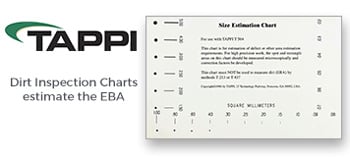 Search
Search
Use the search bar or filters below to find any TAPPI product or publication.
Filters
Content Type
Publications
Level of Knowledge
Committees
Event Type
Collections
Dynamic Simulation Assured Smooth Upgrades of Obsolete Bleach Line Control Equipment, 1997 Pulping Conference Proceedings
Dynamic Simulation Assured Smooth Upgrades of Obsolete Bleach Line Control Equipment, 1997 Pulping Conference Proceedings
Mill Experience with the Elimination of Sodium Hypochlorite Bleach, 1997 Pulping Conference Proceedings
Mill Experience with the Elimination of Sodium Hypochlorite Bleach, 1997 Pulping Conference Proceedings
Update - Canadian Oilseed Flax Straw Utilization, 1997 Pulping Conference Proceedings
Update - Canadian Oilseed Flax Straw Utilization, 1997 Pulping Conference Proceedings
Fundamental Parameters Contributing to Residual Lignin in Kraft Pulp, 1997 Pulping Conference Proceedings
Fundamental Parameters Contributing to Residual Lignin in Kraft Pulp, 1997 Pulping Conference Proceedings
Consistency Measurement of Pulp Suspension Containing Entrained Air, 1998 Pulping Conference Proceedings
Consistency Measurement of Pulp Suspension Containing Entrained Air, 1998 Pulping Conference Proceedings
Environmentally Friendly Pulping and Bleaching of Bagasse, 1998 Pulping Conference Proceedings
Environmentally Friendly Pulping and Bleaching of Bagasse, 1998 Pulping Conference Proceedings
Influence of Alkaline Pulping Conditions on the Efficiency of Oxygen Delignification, 1998 Pulping Conference Proceedings
Influence of Alkaline Pulping Conditions on the Efficiency of Oxygen Delignification, 1998 Pulping Conference Proceedings
Cost-Effective Approach to Liquid / Solid Separation Part #1 - Water Management, 1998 Pulping Conference Proceedings
Cost-Effective Approach to Liquid / Solid Separation Part #1 - Water Management, 1998 Pulping Conference Proceedings
Enhanced Delignification and Bleaching Using TAED Activated Peroxide, 1998 Pulping Conference Proceedings
Enhanced Delignification and Bleaching Using TAED Activated Peroxide, 1998 Pulping Conference Proceedings
Fingerprinting of Extractives in Woods and Pulps, 1998 Pulping Conference Proceedings
Fingerprinting of Extractives in Woods and Pulps, 1998 Pulping Conference Proceedings





